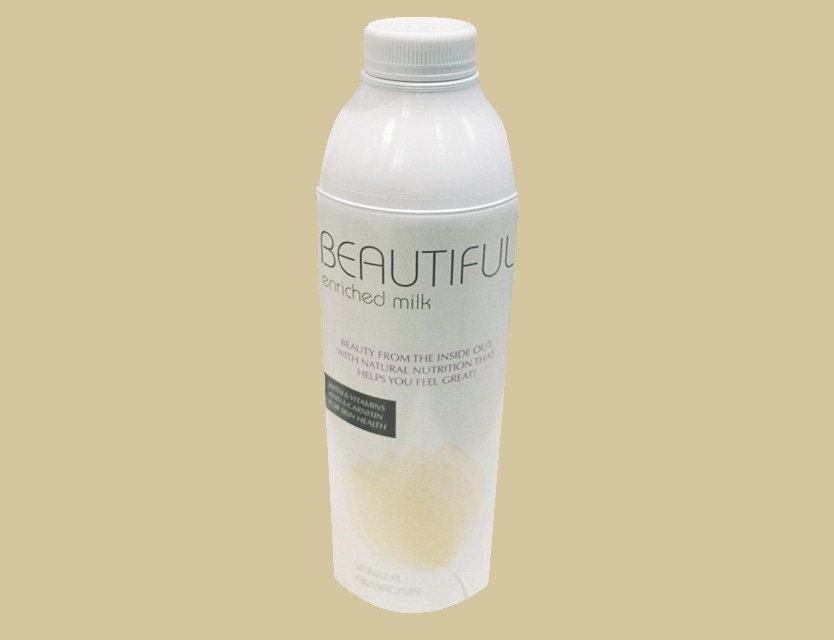5 critical packaging trends for 2015
January 7, 2015

The top 2015 food and beverage packaging trends include options that are compact and lightweight, digitally savvy, earth-friendly, simplified and sport a personality.
With consumers of every age and ilk—including presidents, celebrities and even the pope—documenting their opinions and the daily details of their existence with selfies, tweets and posts, retailers are selling much more than products: lifestyle is a major consideration, according to Michela Vallalta, Tetra Pak’s director of consumer intelligence. That puts today’s food and beverage companies under crucible-level pressure to connect with modern consumers’ self-images, and still fit functionality, sustainability and with style into their products.
Packaging plays a key role in conveying products’ assets to solidify those connections with consumers, as reflected in these five critical food and beverage packaging trends for 2015:
Click the red View Gallery button above to launch the slideshow.
1. Packing packaging with personality
As more people eat and drink on the go—at school, work, the gym and in transit—consumers want, first and foremost, packaging that is easy to hold, open, use and reseal. For beverages, “musts” are openings that produce a smooth and even stream to facilitate the increasingly common practice of drinking while walking, and closures that seal tightly to prevent spillage.
A secondary but increasingly important consideration for on-the-go packaging is style. “More and more people are eating and sipping while walking and going to work,” notes Vallalta. “Visual appeal is becoming increasingly important…consumers want products that offer style as well as functionality.”
She attributes part of this phenomenon to the “selfie generation,” which has clearly impacted more than the Millennials and Generation Zs who have embraced the trend. Now, consumers of every age are mindful that they could be photographed at any moment.
But more broadly, consumers have become accustomed to sizing up others by their accessories and, with the unprecedented prevalence of on-the-go consumption, that judgment now extends to the food and beverages they carry. That has implications for the products inside as well, but packaging designers should understand the importance style plays with modern consumers, who increasingly have food and especially drinks in hand everywhere, all the time.
2. Communicating with “Green Worriers”
Consumers are more concerned than ever about the environment, as evidenced by a 2014 internal Tetra Pak survey covering 25 countries. It found that 87% of consumers in the developed world had at least “somewhat serious” concerns about global climate change; 94% felt the same way about pollution; and a quarter of respondents felt guilty about doing something unfriendly to the environment. However, these consumers are passively green—they want companies that make the products they buy to do the heavy lifting.
Sustainable packaging is effective at alleviating consumer guilt when it communicates its benefits to consumers beyond the recycling symbol—an imperative that plays to the overarching trend of selling provenance along with the product. Are you selling a Georgia peach smoothie packaged in a carton made from FSC-certified sustainable paperboard? Tell consumers the whole story—the ones who care are increasingly taking time to read the labels.
3. Packaging for city dwellers
Demographic trends are clear: A large and upward trending percentage of the population lives in cities, and packaging for urban-dwellers should take into account that many of them walk, take public transportation and live in smaller spaces. That, coupled with the one- to two-person size of most households today, means that food and beverage packaging must offer a range of sizes while still being sturdy, compact and lightweight.
These consumers tend to shop every one to two days and are far less likely to engage in “stock up” kinds of shopping trips. Effective packaging for this cohort should leave behind the heft and the bulk, offering optimal protection for their food while being easy to lift and carry without a car.
4. Designing for digital
The number of places and ways consumers shop today demands a fresh approach to the concept of shelf appeal. What is effective in the grocery aisles may well be too subtle or simply too small to jump out from the smartphone of a Millennial placing a grocery pick-up order during her bus ride to work. Packages that have “billboarding” potential are a great canvas for eye-catching graphics and bold colors that characterize modern campaigns. In the two-dimensional digital shopping space, flat, fully printable packages have an advantage over curved ones partially covered by labels.
5. Simplifying their lives
“Simplify my life” is one plea we’re hearing from consumers every day. In fact, 60% of respondents in a large, 20-country consumer survey conducted by Tetra Pak and IPSOS in 2014 agreed with the statement “I wish my life were more simple.” In the U.S., the tally was 59%.
Though this sentiment holds true for all ages, two consumer groups in particular crave simpler packaging: children and older adults. Both have issues with dexterity and strength, yet neither group wants to ask for help opening and accessing their food and drink. Packaging that is appropriately sized, and easy to grip and hold, open and close, is the difference between frustration and a return customer. Additionally, packaging aimed at seniors should be mindful of aging eyes, with larger print and clear and intuitive markings indicating openings.
To fall into step with ever-more demanding and on-the-go consumers in 2015, packaging will need to up every aspect of its game. That means being greener; flawlessly functional; lighter and more compact; able to communicate its benefits clearly; and being not just highly visible, but fashionable as well.
Suley Muratoglu, vp, marketing and product management, Tetra Pak Inc. U.S. & Canada, currently runs the company’s presence in core categories, including dairy, beverage and food. Further industry insights from him can be found at www.doingwhatsgood.us. Tetra Pak (tetrapakusa.com) is the world's leading food processing and packaging solutions company.
About the Author(s)
You May Also Like


